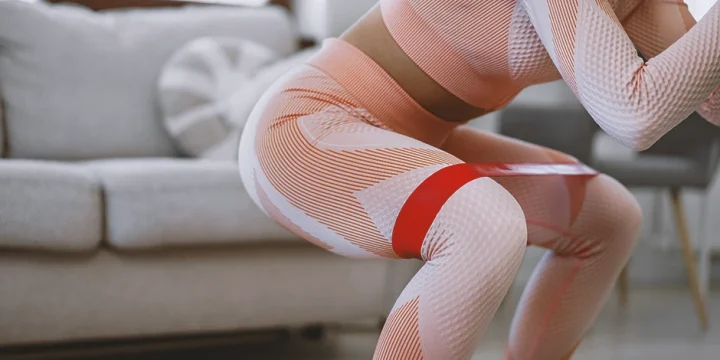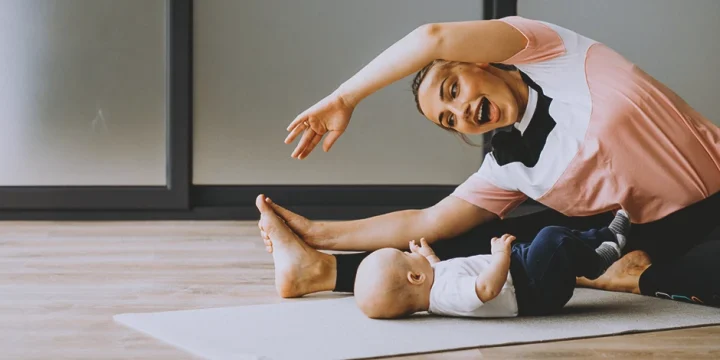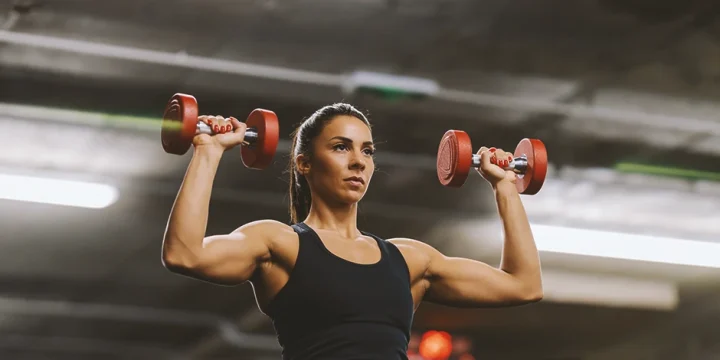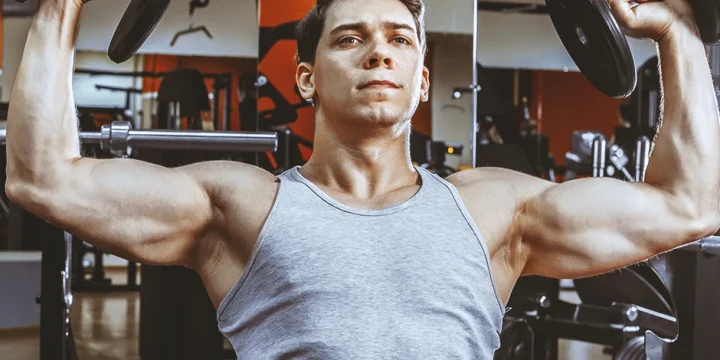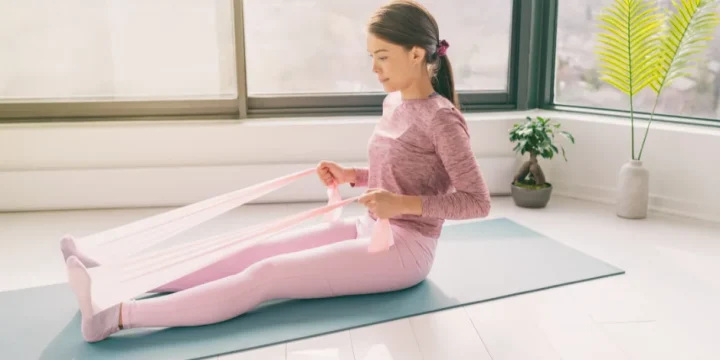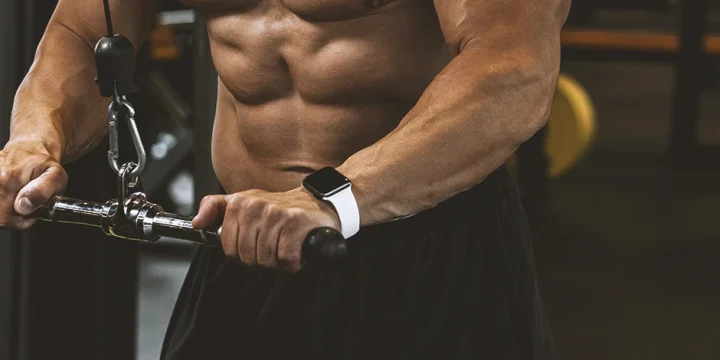Growing calf muscles can be challenging. I advise using dumbbell exercises, which are more effective than just body weight.
My years of coaching experience, combined with insights from a physical therapist, have helped me identify the most effective.
Let's dive in.
Quick Summary
- To strengthen and define calf muscles, it's crucial to incorporate a variety of dumbbell exercises, such as farmer's walk on toes and seated calf raises.
- These calf exercises can be easily performed with basic equipment like dumbbells, a bench, or a plate, making them accessible for most fitness enthusiasts.
- Calf raises target the gastrocnemius muscle; 10-30% of people have a Fabella bone in the lateral head, enhancing knee stability.
- In my opinion, the key to achieving defined calves lies in the consistency and variation of exercises, ensuring all parts of the calf muscles are effectively worked.
Best Dumbbell Calf Exercises

Below are some of the best dumbbell calf exercises you should try.
Farmer’s Walk on Toes
In the farmer’s walk, you walk on your toes instead of your entire foot. This might seem simple at first, but I've personally found that after just a few steps, the intensity really ramps up, making your calves burn. It's a deceptive exercise that, in my experience, quickly engages and strengthens the calf muscles more than you might expect.
Performing this workout helps with your balance and coordination.
You also burn an incredible amount of calories in record time.
Here’s how to do it:
- Hold a dumbbell in each hand while standing upright with your feet hip-width apart.
- With your shoulders down, lift your heel to stand on your toes.
- Walk forward without letting your heels touch the ground for 20–30 small steps for one set.
Seated Dumbbell Calf Raise
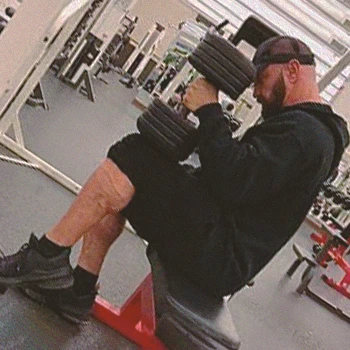
The seated dumbbell calf raise is a great exercise to train the soleus, a large muscle running from below the knee to the heel, which contributes to walking and running. It particularly affects running performance, as confirmed by the study published on the National Library of Medicine website [1].
This exercise can be performed with or without a seated calf raise machine, requiring just a bench, a dumbbell (or two), and a thick plate.
Here’s how to go about it:
- Sit on a bench and ensure your knees are bent at a 90-degree angle with your toes pointed forward.
- Place the thick plate in front of your feet, and rest the balls of your feet on the plate.
- Hold the dumbbells on your thighs for resistance.
- Now let your heels fall to the ground with the balls of your feet still on the plate. Then drive the knees up until you’re on tippy toes.
- Hold for a few seconds before repeating the movement.
Standing Dumbbell Calf Raise
It's similar to the seated calf raises, except it's done in a standing position instead of seated.
Doing calf raises while standing trains the gastrocnemius muscle, a complex muscle in the lower limb that is involved in walking and posture [2].
How to do it:
- Hold a pair of dumbbells in each hand and step up to a stepper with the balls of your feet hip-width apart and facing forward.
- Keep a slight bend on your knee and press the balls of your feet into the ground to raise your heels. This should move your body upward until you stand on your toes.
- Hold the position for a few seconds, then slowly lower your heels back to the starting position.
Dumbbell Jump Squat
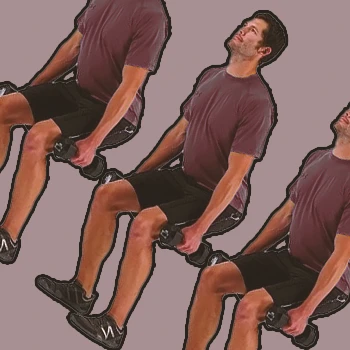
This is a high-intensity exercise that involves squatting and jumping with free weights.
Because of the explosiveness involved in this workout, it makes a great workout routine for weightlifters and basketball athletes who want to achieve an athletic build.
How to do it:
- Stand upright with your feet shoulder-width apart and a dumbbell in each hand.
- Move to a squat position by bending your knees as you push your hips back to lower yourself down until your thighs are parallel to the ground.
- Once you’ve reached a low point, move explosively by straightening your legs to come out of the squat and make a jump.
- Land with bent knees as you lower yourself into a squat again.
- Repeat about 12 repetitions for a complete set.
Related: Best Dumbbell Squats: Muscle and Strength
Donkey Calf Raise
Donkey calf raises are excellent for lower-leg muscle development. Using a weight belt attached to a dumbbell is the most effective method.
Here’s how to do it:
- You will need a plate or stepper to elevate your feet and a higher bench or structure to support your upper body.
- Tie a weight belt around your waist, then wrap the belt’s chain around the dumbbell enough times to ensure it's firmly fastened before attaching it to the other side of the belt.
- Place the stepper behind the support object where you can bend over and place your feet on the stepper so that the balls of your feet are at the edge.
- Let your heels drop, then raise them to stand on your toes.
Single Leg Calf Raise
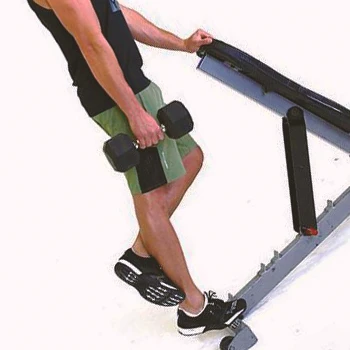
Leg calf raises can help you fix strength imbalances between your feet.
The single-leg calf raise increases calf engagement because it requires more ankle stability than the standing calf raise with both legs.
For this calf workout, you only need one dumbbell. You can also do it on a platform or on the floor.
Here’s how to do it:
- Stand on a platform with your left foot while your right foot is suspended. Ensure the balls of your feet are at the edge of the elevation.
- Hold the dumbbell with your left hand while your right hand is supported by something for stability.
- Now, raise your heel by pressing down through the balls of your foot.
- Hold for a second or two before lowering yourself slowly back to the starting position.
- Do 10 repetitions and switch legs.
Benefits of These Exercises

Below are the benefits of training your calves.
Keeps Calve Muscles Healthy
The calve muscles bear not just the weight of the lower region but of the entire body as well. They also play a significant role in keeping the legs stable when you walk and run.
Hence, if these muscles are weak, it could lead to problems such as pain when exercising and arthritis, which may emerge later in life.
So exercising them regularly is better for keeping them healthy and strong.
Calf muscles improve blood circulation, acting as venous pumps that propel blood back to the heart. This effect is crucial for preventing leg swelling and blood clots, especially in people who spend a lot of time standing or sitting.
Strong Calves Enhance Leg Exercise Performance
The ability to enhance the performance of leg workouts is an underrated benefit that training calves offers. See, calves are involved in almost all leg exercises, including lunges, squats, and step-ups.
“The majority of athletic movements will see an improvement by strengthening the calves.”
- Garrett Reid, Vice President at the NSCA Strongman SIG
So, strong calf muscles enhance your leg workout performance, provide stability to other muscles such as the quads and hamstrings, and reduce stress on the Achilles tendon [3].
Strengthening calf muscles reduces the risk of injuries like ankle sprains and Achilles tendinitis. These muscles act as shock absorbers during high-impact activities, protecting against injuries and improving stability.
FAQs
Do Calves Need Heavy Weight to Grow?
Yes, calves need to be trained with heavy weights to grow. That's because they are used to supporting your full body weight when walking. So, to stimulate their growth through resistance training, you may need to load more than your body weight.
What Weights Are Best for Calf Raises?
The best weights for calf raises are anything from 20 to 200 pounds. It all depends on your fitness level. Start with lighter weights before proceeding to heavier weights.
About The Author
You May Also Like
